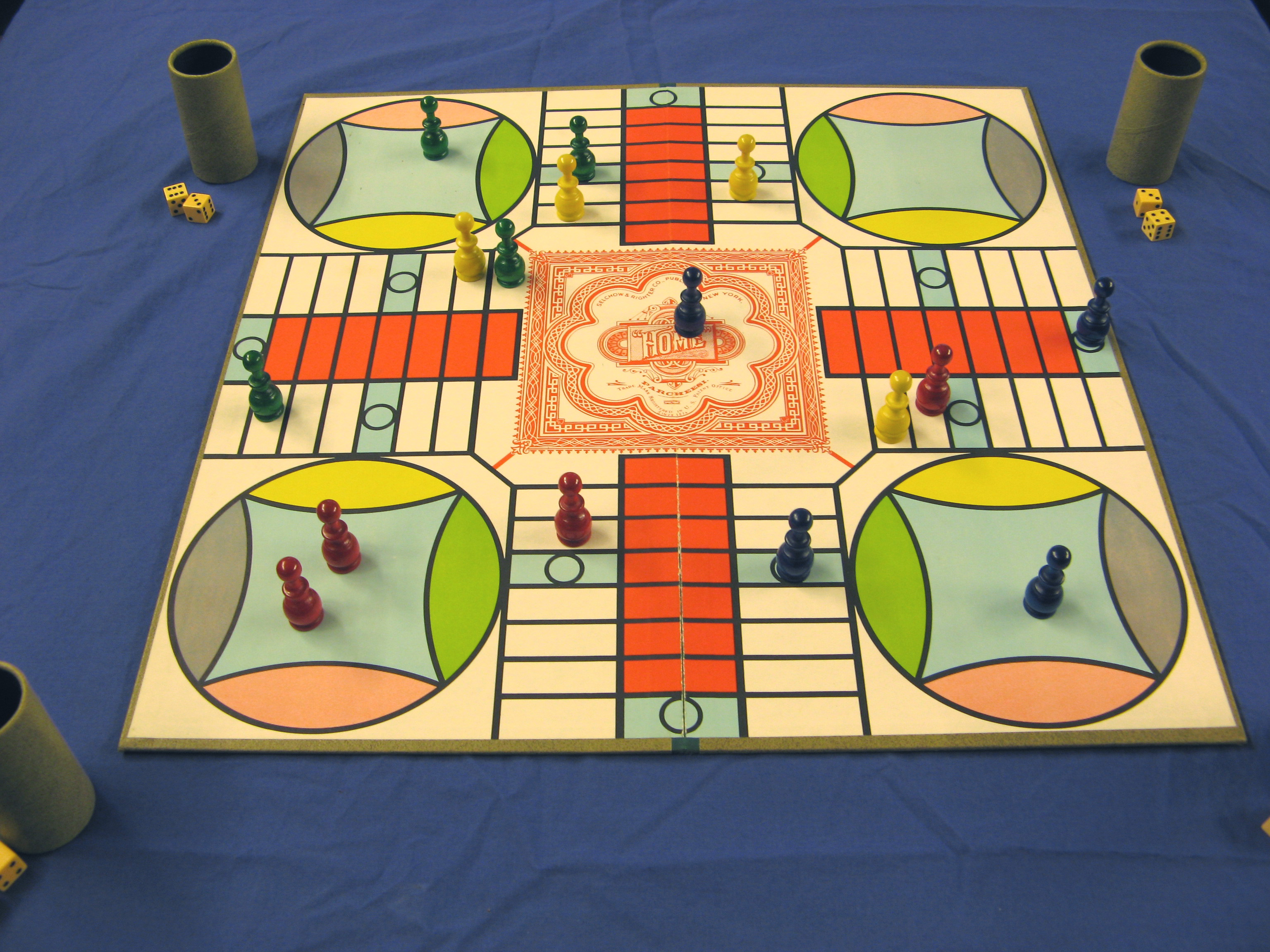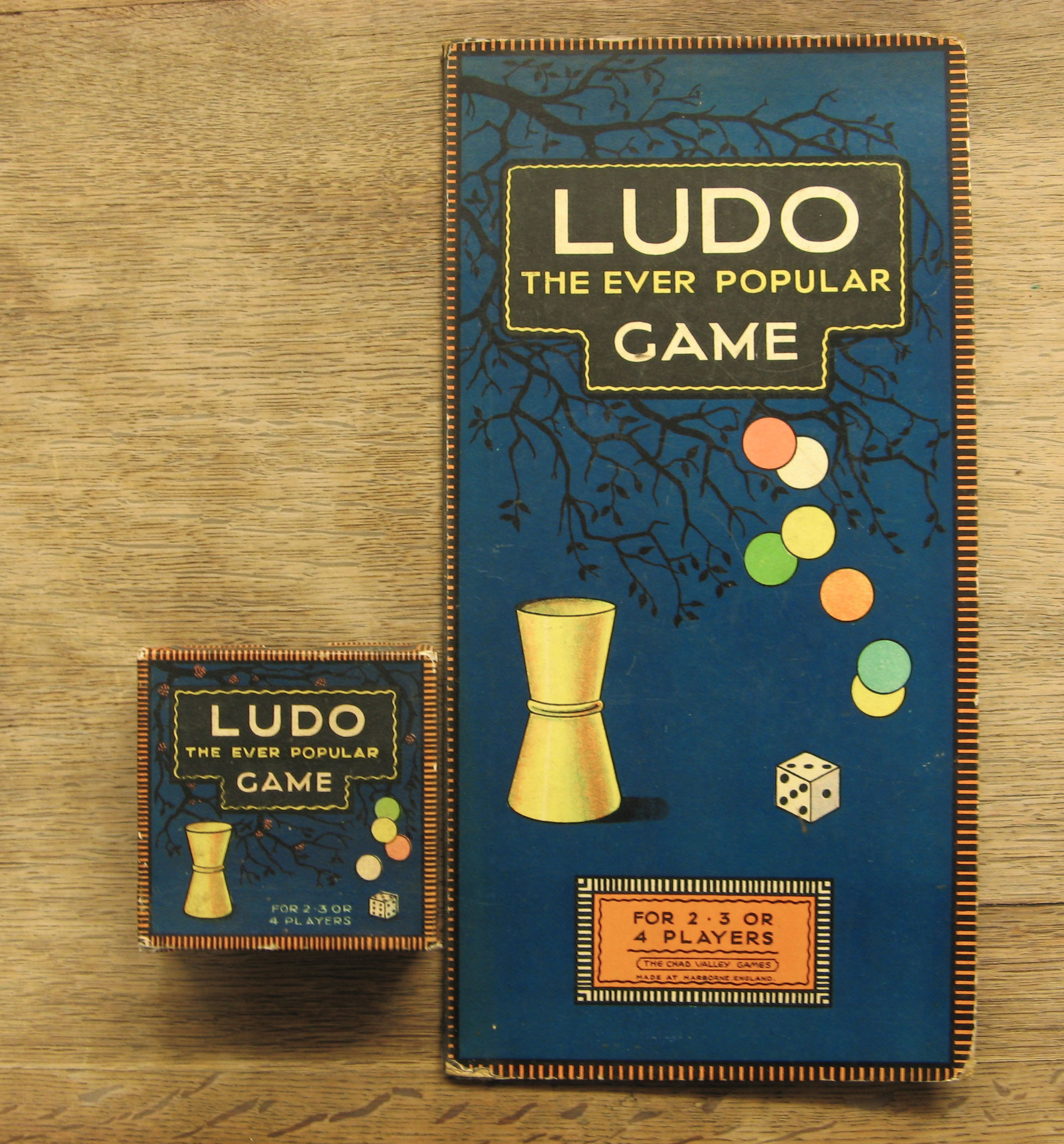|
Chaupur
Chaupar (IAST: ''caupaṛ''), chopad or chaupad is a cross and circle board game very similar to pachisi, played in India. The board is made of wool or cloth, with wooden pawns and seven cowry shells to be used to determine each player's move, although others distinguish chaupur from pachisi by the use of three four-sided long dice. Variations are played throughout India. It is similar in some ways to Pachisi, Parcheesi and Ludo. In most of the villages of India, this game is played by old people. History Gamesmen similar to chaupar with difference in colour schemes along with dice have been identified from Iron age, Painted grey ware period from Mathura. Pachisi is originated from chaupar. Chopat is claimed to be a variation of the game of dice played in the epic poem Mahabharata between Yudhishthira and Duryodhan. Legends There are famous stories amongst kings passed on from generation to generation about kings who played this magnificent game. One particular tale tel ... [...More Info...] [...Related Items...] OR: [Wikipedia] [Google] [Baidu] |
Pachisi
Pachisi (, Hindustani: əˈtʃiːsiː is a cross and circle board game that originated in Ancient India. It is described in the ancient text ''Mahabharata'' under the name of "Pasha". It is played on a board shaped like a symmetrical cross. A player's pieces move around the board based upon a throw of six or seven cowrie shells, with the number of shells resting with the aperture upward indicating the number of spaces to move. The name of the game is derived from the Hindi word ''paccīs'', meaning "twenty-five", the largest score that can be thrown with the cowrie shells; thus this game is also known by the name ''Twenty-Five''. There are other versions of this game where the largest score that can be thrown is thirty. In addition to chaupar, there are many versions of the game. (barsis) is popular in the Levant, mainly Syria, while Parchís is another version popular in Spain and northern Morocco. Parqués is its Colombian variant. Parcheesi, Sorry!, and Ludo are amo ... [...More Info...] [...Related Items...] OR: [Wikipedia] [Google] [Baidu] |
Pachisi
Pachisi (, Hindustani: əˈtʃiːsiː is a cross and circle board game that originated in Ancient India. It is described in the ancient text ''Mahabharata'' under the name of "Pasha". It is played on a board shaped like a symmetrical cross. A player's pieces move around the board based upon a throw of six or seven cowrie shells, with the number of shells resting with the aperture upward indicating the number of spaces to move. The name of the game is derived from the Hindi word ''paccīs'', meaning "twenty-five", the largest score that can be thrown with the cowrie shells; thus this game is also known by the name ''Twenty-Five''. There are other versions of this game where the largest score that can be thrown is thirty. In addition to chaupar, there are many versions of the game. (barsis) is popular in the Levant, mainly Syria, while Parchís is another version popular in Spain and northern Morocco. Parqués is its Colombian variant. Parcheesi, Sorry!, and Ludo are amo ... [...More Info...] [...Related Items...] OR: [Wikipedia] [Google] [Baidu] |
Chopat
Chaupar (IAST: ''caupaṛ''), chopad or chaupad is a cross and circle board game very similar to pachisi, played in India. The board is made of wool or cloth, with wooden pawns and seven cowry shells to be used to determine each player's move, although others distinguish chaupur from pachisi by the use of three four-sided long dice. Variations are played throughout India. It is similar in some ways to Pachisi, Parcheesi and Ludo. In most of the villages of India, this game is played by old people. History Gamesmen similar to chaupar with difference in colour schemes along with dice have been identified from Iron age, Painted grey ware period from Mathura. Pachisi is originated from chaupar. Chopat is claimed to be a variation of the game of dice played in the epic poem Mahabharata between Yudhishthira and Duryodhan. Legends There are famous stories amongst kings passed on from generation to generation about kings who played this magnificent game. One particular tale tells of ... [...More Info...] [...Related Items...] OR: [Wikipedia] [Google] [Baidu] |
Shiva Parvati Chaupar 1694–95
Shiva (; sa, शिव, lit=The Auspicious One, Śiva ), also known as Mahadeva (; ɐɦaːd̪eːʋɐ, or Hara, is one of the principal deities of Hinduism. He is the Supreme Being in Shaivism, one of the major traditions within Hinduism. Shiva is known as "The Destroyer" within the Trimurti, the Hindu trinity which also includes Brahma and Vishnu. In the Shaivite tradition, Shiva is the Supreme Lord who creates, protects and transforms the universe. In the goddess-oriented Shakta tradition, the Supreme Goddess (Devi) is regarded as the energy and creative power (Shakti) and the equal complementary partner of Shiva. Shiva is one of the five equivalent deities in Panchayatana puja of the Smarta tradition of Hinduism. Shiva has many aspects, benevolent as well as fearsome. In benevolent aspects, he is depicted as an omniscient Yogi who lives an ascetic life on Mount Kailash as well as a householder with his wife Parvati and his three children, Ganesha, Kartikeya and ... [...More Info...] [...Related Items...] OR: [Wikipedia] [Google] [Baidu] |
Cross And Circle Games
Cross and circle is a board game design used for race games played throughout the world. Design The basic design comprises a circle divided into four equal portions by a cross inscribed inside it like four spokes in a wheel; the classic example of this design is Yut. However, the term "cross and circle game" is also applied to boards that replace the circle with a square, and cruciform boards that collapse the circle onto the cross; all three types are topologically equivalent. Ludo and ''Parcheesi'' (both descendants of Pachisi) are examples of frequently played cruciform games. The category may also be expanded to include circular or square boards ''without'' a cross which are nevertheless quartered (Zohn Ahl), and boards that have more than four spokes ( Aggravation, Trivial Pursuit). The game board for the Aztec game Patolli consists of a collapsed circle ''without'' an interior cross and thus has the distinction of being a cross that ''is'' a circle (topologically), wit ... [...More Info...] [...Related Items...] OR: [Wikipedia] [Google] [Baidu] |
Gyan Chauper
Gyan Chauper (ज्ञान चौपड़ in Hindi sometimes spelt gyan chaupar) is a dice game derived from chaupar from ancient India, popularly known as Snakes and Ladders. It was from India that it spread to the rest of the world. It was a very popular game that was played not only for entertainment but also as a way to instruct on morality. The central concept of the game is the liberation from bondage of passions. So the players move from the lower levels of consciousness to higher levels of spiritual enlightenment and finally to Moksha. Board geometry The Gyan Chauper board is in a grid pattern. The Hindu Gyan Chauper has numerous formats whereas the Jain Gyan Chaupers are standardized with 84 numbered squares in a 9x9 pattern. The board game is in the human shape-the universal being. The topmost part of the board is the heavenly abode or the Moksha dwar akin to the head of the cosmic being. A protruding square on the extreme bottom left and one square on each side of ... [...More Info...] [...Related Items...] OR: [Wikipedia] [Google] [Baidu] |
Mahabharata
The ''Mahābhārata'' ( ; sa, महाभारतम्, ', ) is one of the two major Sanskrit epics of ancient India in Hinduism, the other being the ''Rāmāyaṇa''. It narrates the struggle between two groups of cousins in the Kurukshetra War and the fates of the Kaurava and the Pāṇḍava princes and their successors. It also contains philosophical and devotional material, such as a discussion of the four "goals of life" or ''puruṣārtha'' (12.161). Among the principal works and stories in the ''Mahābhārata'' are the '' Bhagavad Gita'', the story of Damayanti, the story of Shakuntala, the story of Pururava and Urvashi, the story of Savitri and Satyavan, the story of Kacha and Devayani, the story of Rishyasringa and an abbreviated version of the ''Rāmāyaṇa'', often considered as works in their own right. Traditionally, the authorship of the ''Mahābhārata'' is attributed to Vyāsa. There have been many attempts to unravel its historical growth and c ... [...More Info...] [...Related Items...] OR: [Wikipedia] [Google] [Baidu] |
Parcheesi
''Parcheesi'' is a brand-name American adaptation of the Indian cross and circle board game Pachisi, published by Parker Brothers and Winning Moves Games USA. Equipment ''Parcheesi'' is typically played with two dice Dice (singular die or dice) are small, throwable objects with marked sides that can rest in multiple positions. They are used for generating random values, commonly as part of tabletop games, including dice games, board games, role-playing g ..., four pieces per player and a with a track around the outside, four corner spaces and four ''home paths'' leading to a central end space. The most popular ''Parcheesi'' boards in America have 68 spaces around the edge of the board, 12 of which are darkened ''safe spaces''. Each corner of the board contains one player's ''nest'', or . Setup * Each player positions their four single colored pieces in their respective starting nest. * Each player rolls a single die to determine player order. The player with the lowest ... [...More Info...] [...Related Items...] OR: [Wikipedia] [Google] [Baidu] |
Ludo (board Game)
Ludo (; ) is a strategy board game for two to four players, in which the players race their four from start to finish according to the rolls of a single die. Like other cross and circle games, Ludo is derived from the Indian game Pachisi. The game and its variations are popular in many countries and under various names. History The Mahabharata Pachisi was created in India in the sixth century CE. The earliest evidence of this game's evolution in India is the depiction of boards on the caves of Ellora. The original version is also described in the Indian epic Mahabharata in which Shakuni uses cursed dice to beat the Pandavas, and at last after losing everything, Yudhisthira puts his wife Draupadi on stake and loses her, too. The Pandavas get all their belongings back, though, after Draupadi vows to curse the whole Kuru lineage, but stops at the intervention of Gandhari, and seeing an opportunity to still Draupadi's anger, Kuru king Dhritarashtra promises to give back to ... [...More Info...] [...Related Items...] OR: [Wikipedia] [Google] [Baidu] |





